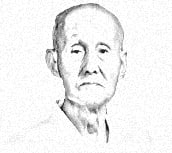About Wado-Ryu Karate

A way of life
The history of Wado Ryu karate begins with the birth of Hironori Ohtsuka on 1st June 1892. He was a sickly child and so at the age of 5 years old, his parents sent him to his great grandfather to study Ju Jitsu.
He was taught punching, kicking, throwing, locks and vital points. Ohtsuka later said that this started him on his lifetime journey in the martial arts. He also studied Ju Jitsu with Tatsusaburo Nakayama.
In 1922 Ohtsuka witnessed Gichin Funakoshi give a demonstration of karate. He was most impressed and he approached Gichin Funakoshi and requested to be taught this karate.
Further Development
It is said that by the end of the 1920's he had developed many of the movements that would eventually form his own Wado Ryu style. He also parted company with Funakoshi but they maintained a profound mutual respect for each other.
By the end of May 1934 Ohtsuka's karate was recognised as an independent style. When the war ended Martial Arts were forbidden but Othsuka continued to practice and teach in private. In the 1950's Karate was allowed again and Wado Ryu became very popular spreading overseas in the 1960's.
One of Ohtsuka's students, Tatsuo Suzuki, has been a major force in bringing Wado Ryu Karate to many students outside of Japan. Ohtsuka continued to practice and perform demonstrations until close to his death.
He died on 29th Jan 1982.


Karate
Karate is a martial art developed in the Ryukyu Islands prior to its 19th century annexation by Japan. It comes from indigenous Ryukyuan fighting methods; te and Chinese kenpo,.
Karate is characterised as a striking art using punching, kicking, knee and elbow strikes and open-handed techniques such as knife-hands.
Grappling, locks, restraints, throws, and vital point strikes are taught in some styles.
It was brought to the Japanese mainland in the early 20th century during a time of cultural exchanges between the Japanese and the Ryukyuans.